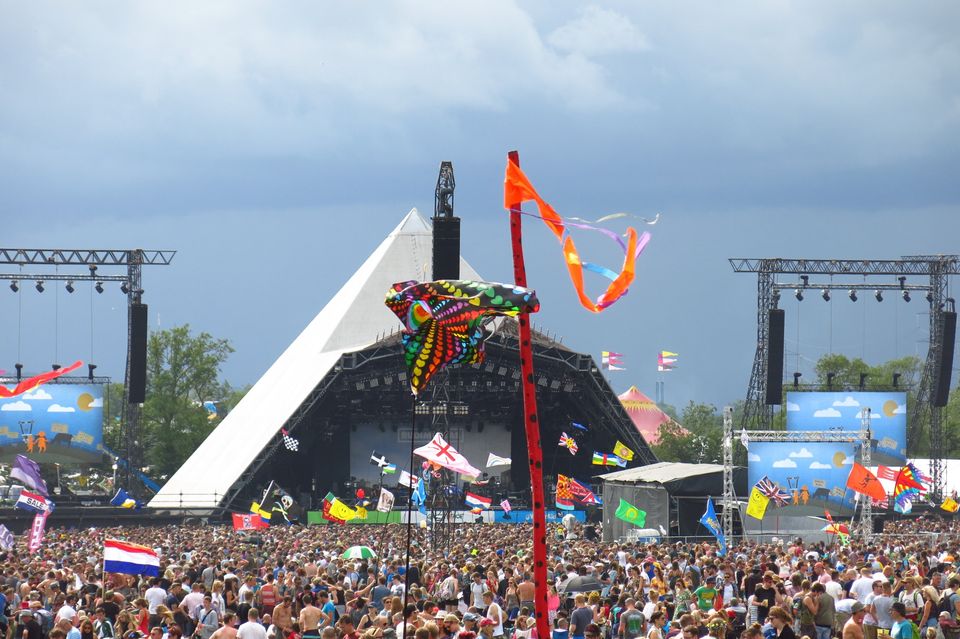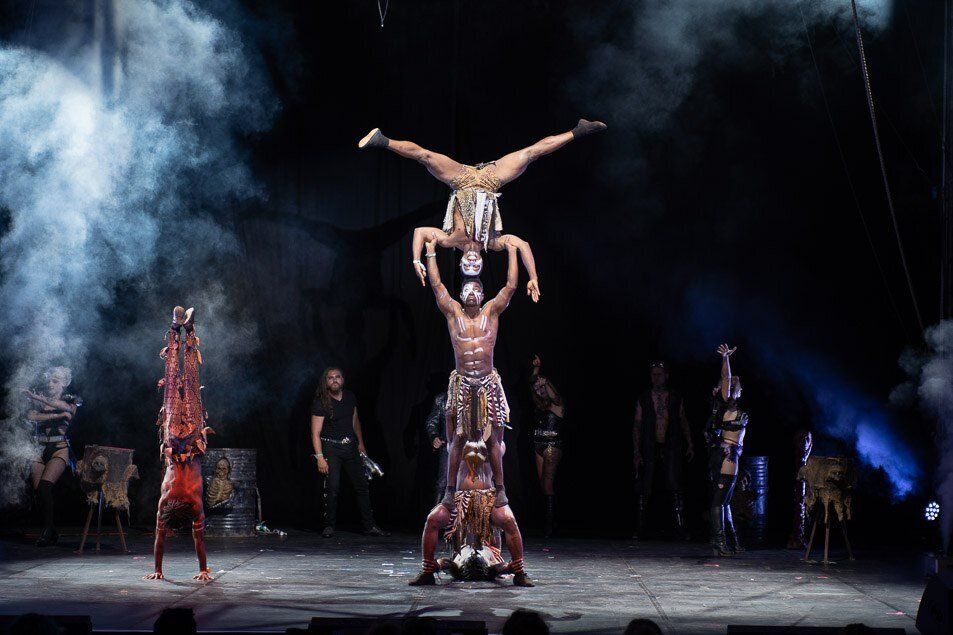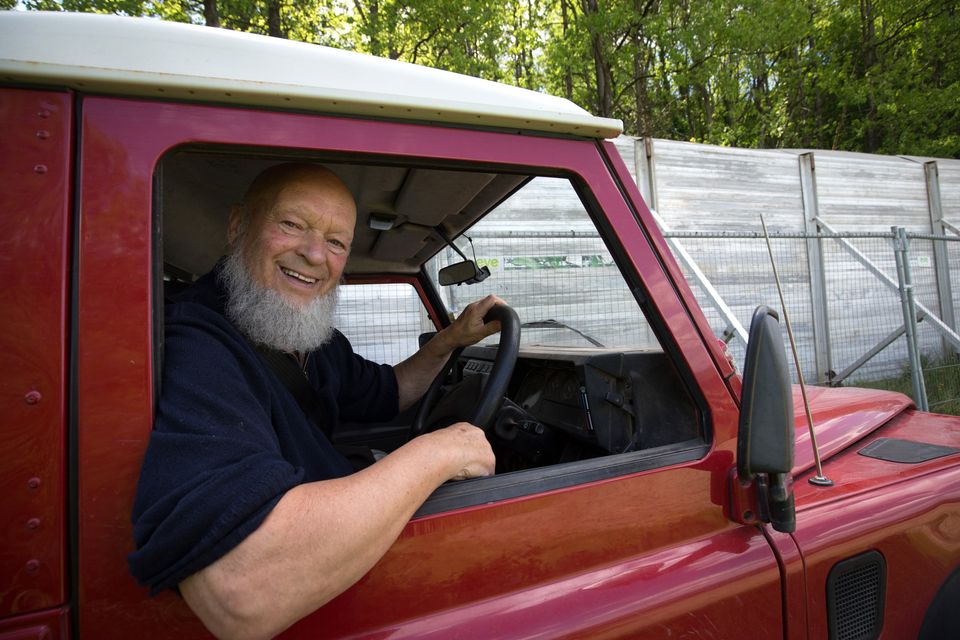It’s past midnight and I’m crammed in a cabaret club. Drag queens are circling around me. If there was table service for drinks, I could convince myself I’m in any ordinary cabaret club.
But I’m not in an ordinary cabaret club – I’m at the Sensation Seekers stage in a field at Glastonbury festival, an area that has been specifically designed to feel like a cabaret club after dark. Aerial performances go above my head as people bend and flex at floor level.

I was participating in the wider Glastonbury festival experience – after all, the festival’s full title is Glastonbury Festival of Contemporary Performing Arts, so dingy cabaret clubs and full-blown theatres run into the small hours behind secret doors and down telltale passages.
Famous bands are only part – the most highly-publicised part – of the festival’s entertainment experience.

Later that night, after the cabaret had finished, I found my friends, who chose Radio 1 DJ Annie Mac’s 2am set over my weird, macabre experience in the Theatre & Circus area.
Having strolled from the labyrinthine Theatre & Circus fields to Pangea, the dramatic new nightlife area for 2019 where artists performed in a literal crane, its arm swinging high above our heads, I was ready to get stuck into a whole other experience.
There in the sprawling crowd (this was a wake up call from the dingy cabaret club) was a man in his Seventies with a bowler hat decorated in layers of fairy lights.
Gen Z ravers in their teens and early twenties shook his hand – but he was largely left alone to party like the younger ravers he was amongst. He had space to dance and a community around him that wouldn’t judge an elderly man dancing to techno with a crowd a fifth of his age.
Where else do you get ages and attractions so diverse on the UK’s youth and music-focussed festival circuit?
Nowhere other than at Glastonbury, where there is a no-judgement policy as well established as the festival itself, which is celebrating its fiftieth anniversary this year.
There may be around 200,000 people on site, but there are very few troublemakers at Glasto, where the mood of inclusion means that these individuals are silenced by the cult-like masses of Eavis’s disciples.
Farm owner Michael Eavis is responsible for the remarkable way the hugely diverse Glastonbury crowd, which has graduated from hippies to include yuppies and pop music fans and pretty much all walks of life, rub shoulders here.
Eavis is a devout Methodist, and his religion intrinsically teaches acceptance. During the festival, he’s often spotted acting out his agenda of goodwill, which is the bedrock of the festival’s inclusive culture.
Eavis is a common sight shaking hands from the window of his Land Rover on site, and historically would famously use forklift trucks to lift perimeter fences and let in thousands of revellers without tickets – just out of kindness.

He champions the strong community feel at the festival, and strives for all factions of the performing arts industry to be represented on site in the ambitious districts and attractions.
Amongst punters, he is known for playing joyous sets with daughter Emily in the humble, smaller tents at the William’s Green part of the site.
I saw him sing a rousing rendition of Something Stupid, gleaming into his daughter’s eyes, on the sunbaked Sunday afternoon last year to a dedicated set of a few hundred ticket holders that eschewed the beginning of Kylie’s set to watch the Octogenerian sing, kinda badly.
But who cared how well he could sing? It’s these glimpses into Glastonbury that are the most fun, and more rewarding than endless headliner-chasing.
Unusual experiences aren’t hard to find if you go slightly off-grid and speak to veteran festival goers, but some of the weirdness is more in-your-face, like 2019′s Glastonbury-On-Sea attraction, where Eavis had an entire pier with beachfront attractions built on site in landlocked Somerset.
As a response to Eavis’s generous hospitality, crowds treat the sprawling site with the same respect they would give their grandparents’ ornamental china set.
“Don’t pee on the land!” is a commonly heard plea. Eavis has asked people to respect his land so gallons of alcohol-infused urine don’t pollute the water table below the fields, and so they do: I’ve seen no more than a handful of hedge urinators over my years of visits.
Naysayers believe the festival’s partnership with Mallets cider is a sign they have become too commercial, and against the community ethos, but have these critics seen the main stages at other festivals? Where they are named after multinational booze corporations? (Hello, Smirnoff House, Reading and Leeds festivals).
Glastonbury would need to go a lot further than taking the odd commercial partner to ruin its intrinsic community vibe, which so many other festival owners have tried and failed to mimic.
Other smaller festivals, like Shambala and the new We Out Here festival, foster authentic communities – but they offer nothing like the potential to get completely and utterly, gloriously lost in the madness of the 1,100 acre site.
2021 will welcome the beginning of a new half-century for Glastonbury.
As the world becomes more technological and fast-paced, and the risky decision of running a festival becomes inevitably harder to justify as we teeter on the brink of a recession, this once-annual opportunity to get lost in a field with hundreds of thousands of like minded people will become even more precious and unique.


